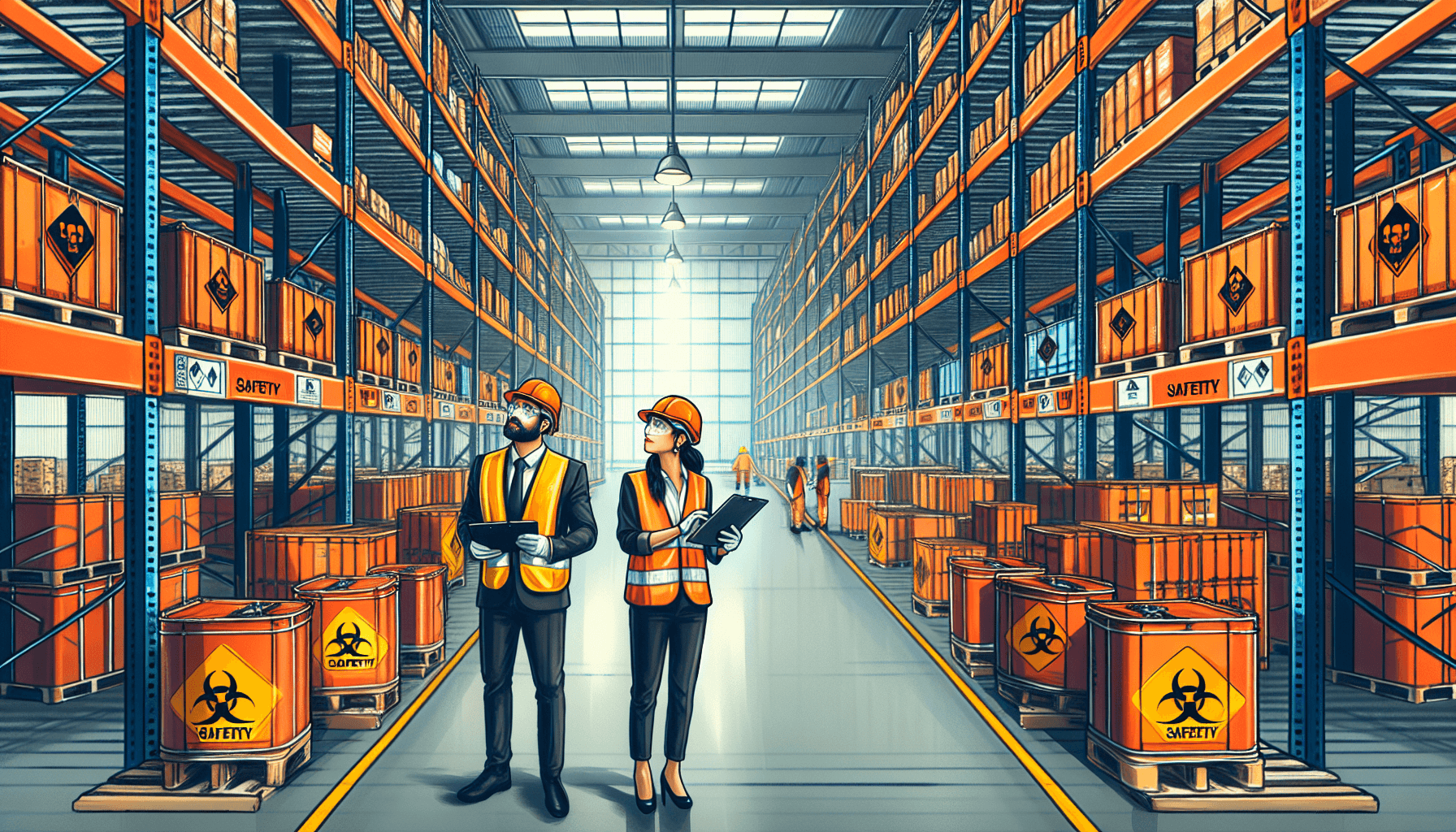Warehouse safety is of utmost importance when it comes to handling hazardous materials. Whether you own a warehouse or work in one, it is crucial to conduct regular safety evaluations to identify potential hazards and take appropriate measures to mitigate risks. In this article, we will discuss the steps involved in conducting a warehouse safety evaluation for hazardous materials.
Evaluating the Warehouse Environment
The first step in conducting a warehouse safety evaluation is to assess the overall environment. Look for any signs of potential hazards such as inadequate lighting, ventilation issues, improper storage of materials, or blocked exits. It is essential to ensure that the warehouse is well-lit, well-ventilated, and free from clutter.
Furthermore, check if the warehouse has proper signage indicating the location of hazardous materials and emergency exits. This helps employees and emergency response teams navigate through the warehouse in case of an emergency. If any of these aspects are lacking, make a note of them and plan for improvements.
Next, review the layout of the warehouse. Ensure that there is enough space for employees to move around freely and safely. Adequate aisle width is crucial to prevent accidents, especially when it comes to handling hazardous materials. Take note of any congested areas and potential risks associated with the warehouse’s layout.
Identifying Potential Hazards
Once you have evaluated the warehouse environment, the next step is to identify potential hazards. Start by reviewing the Material Safety Data Sheets (MSDS) for the hazardous materials stored in the warehouse. These sheets provide essential information on the properties, handling, and storage requirements of materials. Pay close attention to any specific hazards associated with the materials.
Inspect the storage areas to ensure that hazardous materials are properly segregated and stored according to their compatibility. Flammable materials, for example, should be stored separately from oxidizers and corrosive substances. Check if the containers are in good condition and properly labeled with the correct hazard symbols.
Furthermore, examine the handling procedures in place for hazardous materials. Evaluate if employees are trained in proper handling techniques and are equipped with personal protective equipment (PPE) as required. Look for any potential bottlenecks in the handling process that could lead to accidents or spills.
Assessing Emergency Preparedness
Another vital aspect of a warehouse safety evaluation is assessing the emergency preparedness measures. Review the warehouse’s emergency response plan and ensure that it is up to date and easily accessible to all employees. This plan should outline the procedures to be followed in case of spills, leaks, fires, or other emergencies.
Check the availability and functionality of safety equipment such as fire extinguishers, sprinkler systems, and eye wash stations. These should be readily accessible and regularly inspected to ensure they are in working order. Additionally, ensure that employees are trained on how to use this safety equipment effectively.
It is also essential to evaluate the training and awareness programs in place. Regular training sessions should be conducted to educate employees on the hazards associated with handling hazardous materials and how to respond in emergency situations. This helps to ensure that everyone is well-prepared and knows how to react to potential hazards.
Implementing Changes and Continuous Improvement
Based on the findings of the warehouse safety evaluation, it is essential to implement necessary changes and improvements. Address any identified hazards promptly and develop strategies to prevent similar issues from arising in the future. This may involve rearranging the warehouse layout, providing additional training to employees, or acquiring better safety equipment.
Communicate the results of the safety evaluation to all employees, emphasizing the importance of warehouse safety and the steps being taken to address any issues. Encourage active participation from employees in identifying potential hazards and implementing safety measures. Continuous improvement is key to maintaining a safe warehouse environment.
In summary, conducting a warehouse safety evaluation for hazardous materials is crucial to ensure a safe working environment and prevent accidents. By evaluating the warehouse environment, identifying potential hazards, assessing emergency preparedness, and implementing necessary changes, you can create a safer warehouse that minimizes risks associated with hazardous materials.

